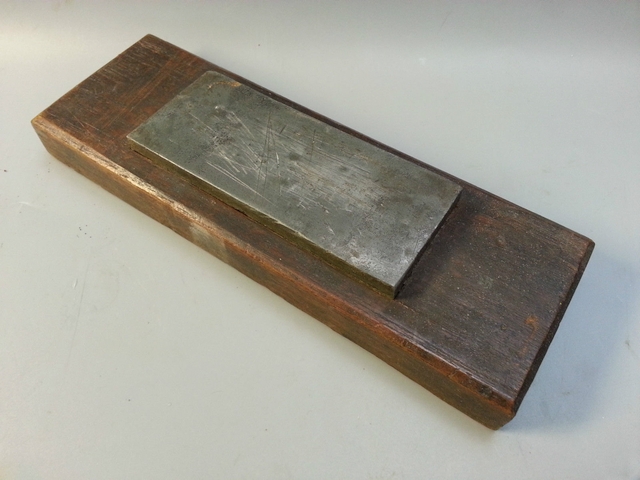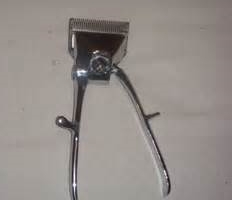Results 1 to 7 of 7
Thread: Mystery Iron hone?
-
06-16-2015, 07:15 PM #1Junior Member

- Join Date
- Jan 2014
- Posts
- 4
Thanked: 0 Mystery Iron hone?
Mystery Iron hone?
Hello everyone
I have an occasional hobby of buying cheap old hones on ebay. I've got lucky with some good stones, and I've bought some absolute rubbish. It's a fairly harmless hobby (hey, some people go out and get drunk - I buy old stones!) and there's a bit of a thrill when I clean the grime off my latest buy and see if I've got a good 'un.
So anyway, I bought this the other day. Looked good in the pictures - nice smooth surface, a few scratches that will lap out, a hint of saw marks on the edges. Very interesting.

When it arrived, the first thing I noticed was it was really heavy. Must be a very dense stone, I think. I tapped it out of the box and gave it a quick rub with sandpaper.
And it isn't a stone. It's a piece of iron. Solid iron. About 4" x 2" x 1".
So, here's a £4.99 gamble that didn't pay off, but I'm curious now. It looks like a hone. It's in a box like a hone (no lid). But what is it? Did anyone ever use a block of iron to sharpen things? Is it something else, and did it have a particular use as a tool?
So I thought I'd see if the collected wisdom here can offer any suggestions. If anyone has any ideas I'd be really grateful. If nothing else I've got myself an industrial size paperweight...
Many thanks indeed
Weasel
-
06-16-2015, 07:30 PM #2

Probably meant to be used with lapping compound or loose grit. Larger size, Iron lapping plates are common in machine trades.
-
06-16-2015, 07:38 PM #3
-
06-16-2015, 08:19 PM #4Junior Member

- Join Date
- Jan 2014
- Posts
- 4
Thanked: 0
Wow - that was quick. Thanks bluesman, thanks Geezer
So it sounds like it could be a sharpening block after all, which would be cool. I'm tempted to flatten it out and give it a try with CrOx and see how it works, just for the fun of it.
I may need to buy some more sandpaper though, as I suspect lapping a piece of iron is going to be a fairly long job.
Thanks again
Weasel
-
06-16-2015, 10:32 PM #5

I guess you could drill a few holes and make it a pinning board!
-
06-16-2015, 10:42 PM #6

The missing plate, long time lost, once said "This is a slice of the first chunk of steel produced by the furnace 35b, given to Chuck by his colleagues on the occasion of his retirement. feb. 28, 1912. Lucky Tiger siderurgical facitlity, Goa, India."

I used to have one in my bench at high school. We used to put a colored putty on it before rubbing a metal part in need to be perfectly flattened with hand tools (scrapers, files... lots of elbow grease spent over a similar thing). We call it "desempeno" in Portuguese.Last edited by Matheus; 06-16-2015 at 10:47 PM.
-
06-17-2015, 10:22 AM #7

It is also possible that the plate is not from iron but from lead (you mentioned the heavy weight)?
These lead plates were quite common in use by clockmakers in the 19th century. The fine rasp or burnishers they had in use were honed on lead or copper plates with emery.
I found quite a lot of this lead plates in the past years that I thougth were hones.


 8Likes
8Likes
 LinkBack URL
LinkBack URL About LinkBacks
About LinkBacks






 Reply With Quote
Reply With Quote




